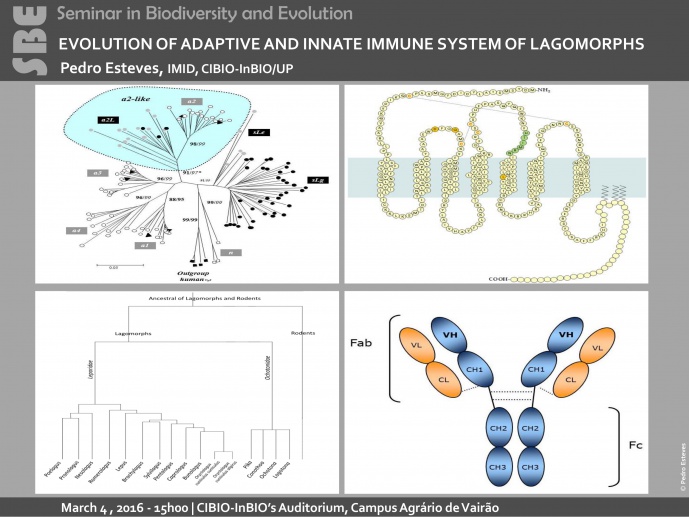EVOLUTION OF ADAPTIVE AND INNATE IMMUNE SYSTEM OF LAGOMORPHS


My main goal is to understand how the host-pathogen interaction shapes the host genetic variability and how the host immune system has been adapting to better respond to and avoid infection by the pathogen. The study of immune system genes concurs to the understanding of the host response to pathogens and may unveil interactions not yet described. I have been studying the adaptive and innate immune system in the lagomorph group with a particular focus in the European rabbit (Oryctolagus cuniculus). Regarding the adaptive immunity I discuss the evolution of genes involved in the antibody biosynthesis, like the VDJ genes and the immunoglobulin constant regions. For the innate immune system I describe the evolution patterns observed in lagomorphs in important genes for the viral infections as CCR5 gene and its ligands, CD4 and Trim5 genes.
Pedro Esteves graduated in Biology by the Faculdade de Ciências da Universidade do Porto in 1996, and in 2003 obtained a PhD degree in Biology, Immunogenetics, by the same institution. In 2005 Pedro J. Esteves established his own research group, the Genetic aspects of Host-Parasite Interaction group in CIBIO-UP presently designated as Immunogenetics, Microbes and Infectious Diseases. His major research interest is to study the host-parasite co-evolutionary processes by monitoring changes in the genetic content of populations of a model species, the European rabbit, in relation to two epizootics that have decimated wild populations in the recent past (i.e. Myxomatosis and Rabbit Haemorrhagic Disease).
[Group Leader: Pedro Esteves, Immunogenetics, Microbes and Infectious Diseases]
Image credits: Pedro Esteves